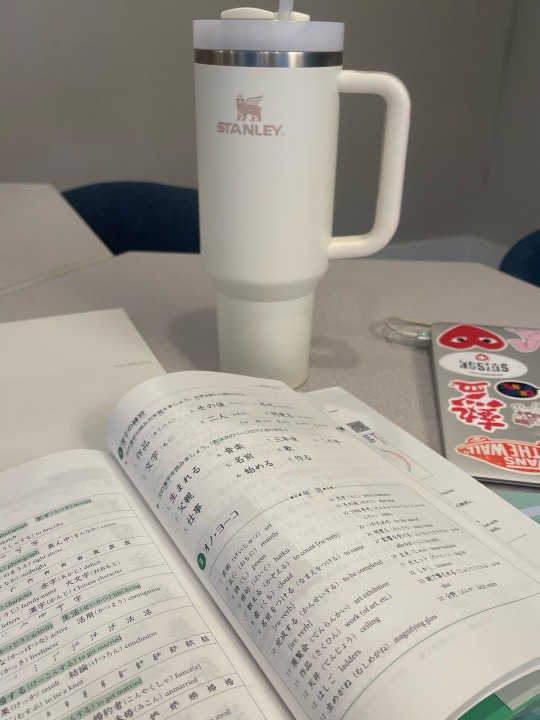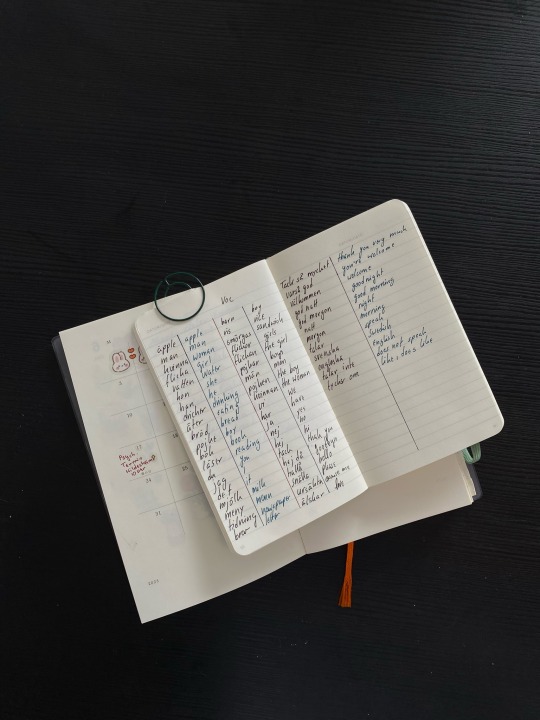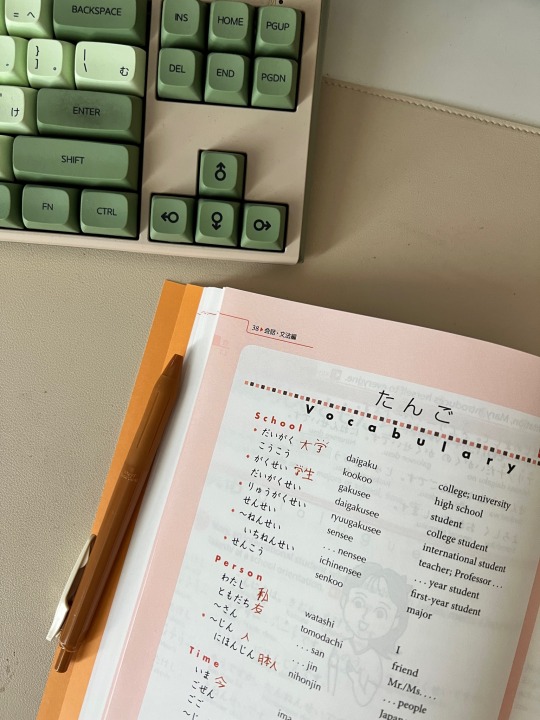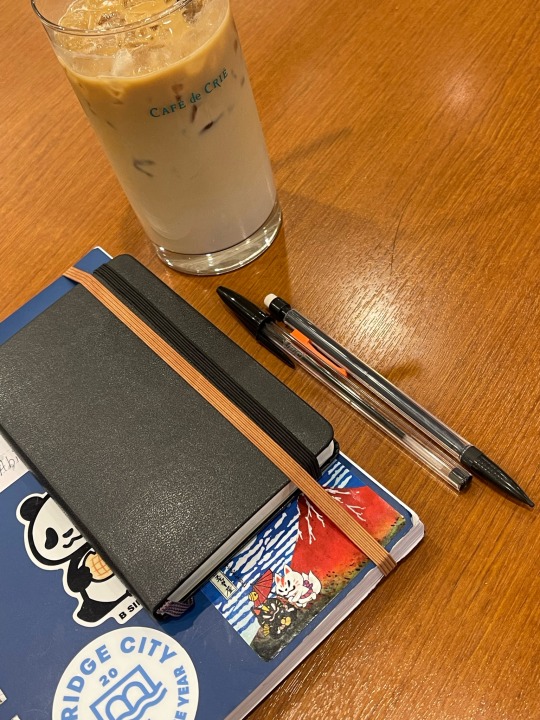#language blog
Text
Wednesday, September 27.
Langblr.
If ever you're in France, accompanied by your kitty cat, and you find yourself unintentionally (and quite unexpectedly) projecting intestinal gas produced within the body by bacteria that has broken down food, and said kitty cat looks a little alarmed, and you don't know what to say, well. Fortune smiles upon you this day. Consider #langblr your knight in shining linguistic armor. Chat, j'ai pété.
It really can happen to anyone. But langblr is here for all your polyglot needs: learning how to say chai tea in Czech, the frankly adorable etymology of peninsula, Greek paleographic fonts, for words of support for those underway with their language-learning adventures, or if you're in need of some support yourself. It is a particularly wholesome corner of Tumblr, for those with an interest in the slow-burn magic of learning another language.

#today on tumblr#langblr#french langblr#language learning#polyglot#foreign languages#learning languages#french language#language#language blog#languageblr#languages#langblog#bilingual#studyblr#catblr#cat#i farted#cat i farted#farty cat#linguistics#etymology#language stuff
942 notes
·
View notes
Text


sunday studies 🕊️🍵📗
#studyblr#study blog#langblr#langblog#japanese langblr#japanese language#japanese#studyinspo#study motivation#study aesthetic#study desk#exam study#student blog#learning japanese#language blog#language learning#student life#studying
552 notes
·
View notes
Text
funny ways to say “in the middle of nowhere”
Collected funny ones under this post + contributions to this one (my selection). Most involve ass(holes), have god/the devil, (nonsense) names of villages…
🇩🇪German: in the ass of the world/ the pasture- am Arsch der Welt/der Weide; where Fox and Hare bid each other good night - Wo sich Fuchs und Hase Gute Nacht sagen (old-fashioned), where the dead dog lays - Da liegt der tote Hund, in Buxtehude/ (Kuh)kaff, in der Pampa, in Timbuktu
🇮🇹Italian: in assland - in culonia/culandia, in the wolves’ ass - in culo ai lupi, in the ass of the word - in culo al mondo; 🇫🇷 French in the asshole of the world - dans le trou du cul du monde
🇨🇿Czech: Where foxes bid good night to one another - Kde si lišky dávají dobrou noc
🇩🇰Danish: where the crows turn around - Hvor kragerne vender on Lars diarrheas field/on the field of Lars Shitpants - På lars tyndskids mark
🇳🇴Norwegian: far damn from violence - langt pokker i vold, “huttaheiti” (gibberish)
🇸🇪Swedish: out (there) in the spinach - ute i spenaten,“tjotaheiti” (see above, maybe originally from Tahiti)
🇪🇸in Spain: in the fifth hell/pine tree - En el quinto infierno/pino, where Christ lost the sandal/hat/lighter - Donde Cristo perdió la alpargata/gorra/mechero;
🇲🇽 Mexico: Where the devil farts - Donde el diablo se echa un pedo, and sometimes someone answers: “Y nadie lo escucha” And no one hears
🇹🇼in Taiwan: where birds don't lay eggs and dogs don't shit - 鳥不生蛋狗不拉屎的地方
🇵🇱Polish - where crows turn around - Gdzie wrony zawracają, where dogs bark from their ass - gdzie psy dupami szczekają 🐶; Where the devil says goodnight - Gdzie diabeł mówi dobranoc, where (black) pepper grows - gdzie pieprz rośnie, (mostly in the context of running as far away as possible or chasing someone away)
🇦🇺Australia: woop woop or "in the middle of woop woop' 🇳🇿 NZ: wop wops
🇻🇳Vietnamese: holy forests, poisonous waters - rừng thiêng nước độc / where mountain passes are windy/cloudy and winds swirl in vortexes - đèo heo hút gió or đèo mây hút gió (rarely used)
🇨🇦🇫🇷 Québéc: Saint clin clin des meuhs meuhs (actual village name…)
🇸🇦 Arabic (Saudi dialect): in the castle of wadren في مقلاع وادرين (an old castle in the middle of desert)
🇮🇱 in Israel: Israel: at the end of the world, take a turn left - סוף העולם שמאלה
🇫🇮Finnish: behind God’s back - jumalan selän takana, in the devil’s ass - helvetin perseessä;
🇬🇷 Greek: at the devil’s horn - Στου διαόλου το κέρατο;
🇧🇬 Bulgarian: on the ass of geography - На гъза на географията
🇮🇸 Icelandic Out in an asshole - úti í rassgati;
🇧🇷 in Brazil: in cock’s house - na casa do caralho;
🇦🇷 in Argentina: in the pussy of the parrot- en la concha de la lora 🦜;
🇪🇪 Estonian: in the bear's ass - karuperses 🐻
🇺🇸 USA: bumfuck Egypt
🇧🇪 in Belgium (Dutch): in a farmer’s asscrack - in een boerengat
🇺🇦 Ukrainian: in the devil's swamps в чорта на кулічках, where the crow won't carry bones куди ворон кісток не заносить
#langblr#language blog#idioms#funny idioms#foreign languages#language facts#my selection#my fav is the german one <33333#polyglot#have had this in the drafts for more than a year i guess#mine#my lists
3K notes
·
View notes
Text
Really enjoying Duolingo’s gradual progression from “the blue duck wears a big hat” to “if Matthew doesn’t make good on his alimony payments then I’m calling a hitman”
#duolingo#langblr#language#language blog#languageblr#language meme#language memes#language learning#duolingo memes#learning languages#learning#studyblr#language lessons
816 notes
·
View notes
Text
改まった形|Polite Forms
In formal settings like in a business meeting or at a public gathering some words are switched with politer forms. You often hear them when somebody is giving a speech, holding a presentation or on TV. But they appear in written form as well, especially in business context. Basically, everywhere where keigo is used, it is also expected to apply politer forms.

#文法#敬語#japanese langblr#langblr#studyblr#study movitation#learning japanese#japanese vocabulary#japan#japanese#study blog#study notes#language blog#keigo#japanese studyblr#japanese grammar#japanese language#日本語#日本語の勉強#nihongo
153 notes
·
View notes
Text


todays studies and calm moments ✨ reblog is ok, no repost
#my photos#studyblr#study blog#studygram#study notes#study space#studyinspo#study motivation#studying#language#language study#study languages#langblr#language blog#my notes#notebook#noteblr#dark acadamia aesthetic#dark academia#planner#booklover#bookaddict#bookblr#book blog
566 notes
·
View notes
Text
Free online courses about Ukraine
Basics of the Ukrainian Language and Culture - https://www.open.edu/openlearn/languages/introduction-ukrainian-language-and-culture/
Ukraine: History, Culture, and Identities; this course is available in English, French, Italian, and Norwegian on Coursera: https://ui.org.ua/en/sectors-en/the-first-online-course-about-ukraine-in-english/
The Making of Modern Ukraine with Timothy Snyder: https://www.coursera.org/learn/the-making-of-modern-ukraine
Crimea: History and People on Udemy: https://www.udemy.com/course/crimea-history-and-people/

#ukrainian language#ukrainian#ukrainian101#ukrainian lesson#learning languages#language learning#ua lang#ukraine#langblr#slavic languages#learnsomethingneweveryday#learning#self studying#polyglot#Language blog#foreign languages#learnukrainian#learn ukrainian#free resources for language learners#free courses#language courses#slavic language courses#eastern european languages#eastern european#Ukraine
269 notes
·
View notes
Text
Spanish Media/Input Recommendations?
Can you guys comment me some good media/input recommendations for someone learning Mexican/Spain Spanish? I' talking about any and all that you guys find interesting, whether you learned Spanish on your own or it's your native language!
Books
Podcasts
Tv Shows
Movies
Youtube channels
Songs/Musical Artists
Favorite Spanish teachers/tutors on Italki
Literally anything!
Thank you guys <3
#spanish studyblr#spanish langblr#spanish learning#spanish language#spanish#langblr#langblog#language tips#language learning#foreign languages#languages#language studyblr#language study#language goals#learn spanish#italki#spanish podcast#spanish books#university student#college student#español#mexican spanish#student life#student#college studyblr#college studyspo#language resources#language blog#languageblr#language learning tips
92 notes
·
View notes
Text

2023/07/21
now that my summer school is over, i’ve got two free days from work, so i’m picking up japanese again! my writing is abhorrent, so, sorry
#lupusmaxima#dark academia#bookblr#chaotic academia#brown#coffee#beige#literature#studyblr#classical literature#japanese#learn japanese#日本語学校#日本語の勉強#genki#langblr#language study#language blog#language learning
350 notes
·
View notes
Text
Käärijä - Cha Cha Cha vocabulary in Finnish

Viikko - week
Päivä - day
Mielenkiinto - interest
Rata - nightlife, going to bars, drinking (esp. during the weekend)
Ilta - evening
Aika - time
Ulkokuori - shell
Juoma - drink, beverage
Huominen - tomorrow
Tuoppi - pint
Huoli - worry
Tuoli - chair, seat
Naamataulu - face
Parketti - (dance)floor
Maailma - world
Samppanja - champagne
Silmä - eye
Puhe - speech
Puoli - side
Arki - everyday life; weekday, working day
Mies - man
Rankka - exhausting, hard
Pitkä - long
Nuori - young
Jäinen - icy
Sekaisin - messed up
Vapaa - free
Vakava - serious
Toinen - other, another
Olla - to be; to have
Kumota - to down (a drink)
Tuhota - to destroy, to demolish
Pitää kiinni - to hold
Miettiä - to think
Tarttua kiinni - to grab
Haluta - to want
Jatkaa - to continue
Pysyä - to stay
Kutsua - to invite, to call
Olla lukossa - to be frozen
Tulla - to come
Lähteä - to leave, to go
Tanssia - to dance
Pelätä - to be afraid of, to be scared of
Kaataa - to pour
Karsastaa - to have eyes that are turned in different directions
Sammaltaa - to slur
Saada valta - to get (power) over
Paljon - a lot, much
Takana - behind
Vielä - still
Kaksin käsin - with two hands
Niin kuin, “niinku” - like
Kunnes - until
Ei enää - no more
Muutama - a few
Päälle - on
Tänään - today
Tämä, “tää” - this
Minä, “mä” - I
Se - it, that
Ja - and
Ei - no
Kun, “ku” - when
Silti - still
Vielä - still
Nyt - now
Jo - already
Ei laisinkaan - not at all
#Finnish#suomi#polyglot#languages#langblr#languageblr#language blog#langspo#langtwt#tongueblr#studyblr#vocab#Käärijä#lyrics#ESC#Eurovision#Eurovision Song Contest#music
460 notes
·
View notes
Text
Learning a new language is your YouTube subscriptions list looking like it belongs to a toddler from a foreign country.

#langblr#studyblr#studying#studyblr community#study#learning german#studying german#language learning#langblr community#lang blog#language blog#langblog#language#languages#language study#study blog
79 notes
·
View notes
Text
15th April 2024
I've been ignoring my language course for the past 7+ months and my final exam for it is coming closer day by day T-T


Overall a productive day...
Today I :
Completed 5 lessons with grammar in Arabic
Attended my Arabic class
Finished my homework
Read 100+ pages (still counting)
Completed a novel
Total study time: 1 hour 30 mins
#language#langblr#studyblr#study motivation#school#study blog#language stuff#language learning#language study#language blog#arabic#arabic langblr#study aesthetic#student#studyspo#studying#arabic language#study productivity#high school#100 days of productivity#studying tips#study session#study tips#exam season#student life#learning tips
55 notes
·
View notes
Text


#studyblr#study blog#langblr#langblog#japanese langblr#japanese language#japanese#studyinspo#study motivation#study aesthetic#japanese kanji#japanese manga#learning japanese#student life#language learning#language blog#language
241 notes
·
View notes
Text
Why learn a foreign language, you ask?
Understanding and speaking the language will at some point inevitably make you feel like a spy/important person... - Bonus points for when you can eavesdrop on public conversations.
Have those fun little moments when you catch mistakes in your target language on signs, merchandise and in media. (Especially if it’s Japanese or Chinese... People love to butcher those).
Imagine what your crush would think if they suddenly realize you speak a different language 3 months after meeting you. They may gasp, exclaim that you’re full of surprises, and go weak in the knees from your oh-so-mysterious demeanor (bonus points if it’s French or Italian).
Fulfill your study aesthetic dreams, because you finally have something to theme a new blog around. Time to splurge on a pretty notebook and nice pens and work on that handwriting. Get the desk set up nice and cute, grab yourself the most beautiful coffee mug you can find. You’ve just become that girl. And you love it. Can’t forget to mention the messy buns, glasses (don’t have to be prescription), cat ownership and plants.
Increase your chances of escaping eternal loneliness TEN FOLD because learning a language just opened doors to millions of people who couldn’t speak yours.
Your personality may shift depending on which language you’re speaking, due to cultural and linguistic differences. So, by learning a new language, you will not only become more knowledgable about the world around you, but about yourself and people in general.
Accurately understand books, shows, and all sorts of media in your target language. (No more relying on suspicious subtitles).
Feel satisfied in knowing that you’ve picked up quite a fun and rewarding hobby that can and will expand your life in every possible way.
#learn japanese#learn french#learn italian#learn turkish#langblr#studyblr#language blog#learn a language
432 notes
·
View notes
Text

#syntax#langblr#language#language blog#languageblr#language meme#language memes#linguistics#linguistics humor#lingblr#linguistics blog#tweet
297 notes
·
View notes
Text
敬語の5分類|The 5 Types of keigo
In the Japanese language it is possible to show respect towards another person by replacing words, mostly verbs, with politer equivalents. This can be done by using elevating expressions for the actions of your superior or degrading expressions for your own actions.

Overview: Verb Formation Rules for sonkeigo 尊敬語, kenjōgo I 謙譲語Ⅰ and kenjōgo II 謙譲語Ⅱ (also known as teichōgo 丁重語).
In a guideline released by the Japanese Agency for Cultural Affairs in the year 2007 keigo has been divided into five types: 尊敬語・謙譲語Ⅰ・謙譲語Ⅱ(丁重語)・丁寧語・美化語. The first three types demonstrate the most complex rules, hence why I summarized them in the chart above for a quick overview. Hereafter, you can find thorough introductions to each type.
尊敬語|Respectful Language
Sonkeigo is the most basic method to pay special respect towards a teacher, a superior or a client. This can be done by switching the verb (refering to the action of your superior) with its passive form.
e.g. 読みます → 読まれます
However, the degree of politeness isn't that high. Hence, it is important to learn the following formation rules as well:
1)特定形 |Special forms
Some verbs have a fixed forms. If a verb has a special form it is to be used.¹
e.g. いる・行く・来る → いらっしゃいます
2)サ変動詞+なさいます
In this context サ変動詞 refers to nominal verbs. Basically, nouns that can be turned into verbs by adding する. It is possible to add お or ご infront of the verb but it can be also omitted if unsure which prefix is the right one.
e.g. 出発する → (ご)出発なさいます
3)お+Ⅴます+になります
This formation rule is for all verbs that do not belong into either of the two categories above. Omitting ます leaves the so-called renyōkei 連用形 or conjunctive form of the verb. Here, the prefix added is always お.
e.g. 待ちます → お待ちになります
It is not uncommon to apply this formation rule to サ変動詞 as well. Depending on the nominal verb お needs to be changed to ご.
e.g. 参加する → ご参加になります
However, there are exceptions. Some nominal verbs are not idiomatic and end up sounding unnatural to native ears.
e.g. 運転する → ご運転になります ✕
運転する → 運転なさいます 〇
謙譲語 Ⅰ|Humble Language I
Kenjōgo I + II have the opposite effect of sonkeigo. They degrade one's status and are therefore applied only to your own actions or the actions of someone from your inner circle (e.g. a co-worker, or a family member).
In contrast to kenjōgo II, kenjōgo I is used when your action (or the action of someone from your circle) is directed at the person you want to pay respect to. It is also used when you do something for said person.
The formation rules are as listed below:
1)特定形 |Special forms
Some verbs have a fixed forms. If a verb has a special form it is to be used.¹
e.g. 言う → 申し上げます
The translation would be "saying sth. to sb." or "telling sb. sth." implying that your action is directed at the person you want to pay respect to.
2)お・ご+サ変動詞+します
Again, there are some verbs that sound unnatural when this formation is applied.
e.g. ご運転します ✕
In this case, you can formulate the sentence with ~させていただきます or switch to kenjōgo II.
e.g. 運転させていただきます 〇
運転いたします 〇
Note that, depending on the situation ~させていただきます might give of the impression that you are putting yourself down too much. This can result in making your counterpart feel uncomfortable.
3)お+Ⅴます+します
This formation rule is for all verbs that do not belong into either of the two categories above. Omitting ます leaves the so-called renyōkei 連用形 or conjunctive form of the verb. Here, the prefix added is always お.
e.g. 伝える → お伝えします
謙譲語 Ⅱ|Humble Language II
Kenjōgo II is used when your own action is unconnected to the person you want to pay respect to. Therefore, this type of language can often be found in anouncements, news reports or broadcasts elevating its audience. At train stations one often repeated phrase is:
e.g. もうすぐ電車が来る → まもなく電車が参ります
In the example above you can see that not only the verb has been switched with a politer equivalent, but the adverb as well. There are many words that can be switched with politer versions. Unlike verbs, they do not need to be inflected and can be studied like regular vocabulary.
It can also be pointed out that the action does not have to be conducted by the speaker, but can be an object (like in the example above) or a third party as well.
The formation rules are:
1)特定形
Some verbs have a fixed forms. If a verb has a special form it is to be used.¹
e.g. 言う → 申します (as in 私は◯◯と申します)
When introducing yourself you simly "say" or "state" your name. This is not considered an action that is directed at the person you want to pay respect to, hence it falls into the category of kenjōgo II.
2)サ変動詞+いたします
e.g. 応募する → 応募いたします
3)丁寧語
For all verbs that do not fall under the categories above, teineigo is used, or in other words the です・ます form.
e.g. 話す → 話します
In case the ~ている form is used, the degree of politeness can be elevated by replacing it with ~ております which is the special form of いる.
丁寧語|Polite Language
Teineigo is the neutral polite language. You're probably already familiar with this one, since this is the most foolproof way of speaking politely due to its absence of any kind of seesaw principle. It is used everywhere outside of your circle of friends and the safest way to talk to strangers. However, in certain situations it is expected to raise the level of politeness.
e.g. 聞く → 聞きます
美化語|Refined Language
There is a certain number of words, especially nouns, that can be turned into more elegant sounding versions. It can be easily understood by just looking at some examples.
e.g. 金 → お金
酒 → お酒
料理 → ご料理
米 → お米
散歩 → お散歩
Adding the respective prefix お or ご takes away the roughness of a word. This, however, can only be done with a few selected words. Refined words are commonly used in both formal and informal speech.
‾‾‾‾‾‾‾‾‾‾‾‾‾‾‾‾‾‾‾‾‾‾‾‾‾‾‾‾‾‾‾‾‾‾‾‾‾‾‾‾‾‾‾‾‾‾
¹ I compiled all special forms 特定形 that you need to know in this post: 敬語の特定形|Keigo: Special Verb Forms.
#文法#敬語#japanese langblr#langblr#studyblr#study movitation#learning japanese#japanese vocabulary#study aesthetic#light academia#japan#japanese#study blog#study notes#language blog#language#lingusitics#keigo#study motivation#studyspo#japanese studyblr#japanese grammar#japanese language#japanese studyspo#日本語#日本語の勉強#nihongo#learn japanese
194 notes
·
View notes